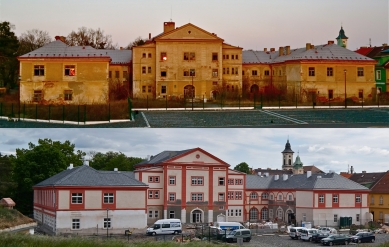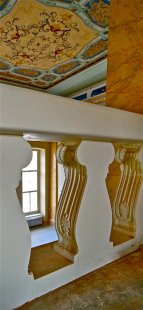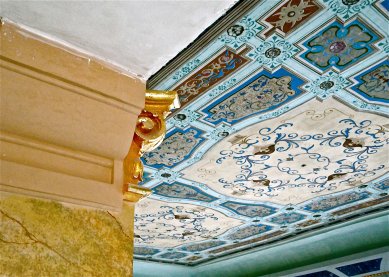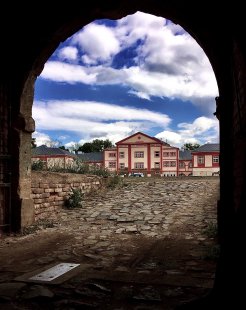Terezin – The reconstruction of the Wieser House in Terezin, Litoměřice, which the city has managed to secure 130 million crowns in grants from the European program and the Ústí Region, is nearing completion. A permanent exhibition mapping genocidal violence in the history of mankind is to be established there within five years. This was announced today in a press release by Šimon Krbec, the executive director of the Center for Genocide Studies Terezin, which will create the exhibition.
The renovation of the former residence of Kašpar Wieser, the main supplier of materials for the construction of the Terezin military fortress, has been ongoing for almost two years. The unique French-style palace from the late 18th century has been unused since the 1990s. Krbec considers the creation of an exhibition on the theme of genocide to be important even today. "On the 75th anniversary of the end of World War II, we see several alarming trends. The causes and outcomes of World War II are being questioned in the public sphere, and the role of perpetrators of crimes against humanity is being relativized. At the same time, we are witnessing an increase in anti-Semitic attacks across Europe. In this heightened political atmosphere, open denial of the Holocaust is just a matter of time," he stated.
According to him, the intended exhibition will not only focus on genocidal events of World War II, but will also explore the universal social-psychological causes of such behavior throughout human history. Other events of the 20th century will also be mentioned, such as the Armenian genocide, the Nanjing massacre, the genocide in Cambodia, and the genocide in Rwanda. "Genocide is a universal phenomenon in human history that is the result of a well-known social-psychological process. It is therefore up to us to use the knowledge from the field of genocide studies to prevent new cases of genocidal behavior," Krbec added. The planned exhibition in the Wieser Palace will build on the center's activities in the Artillery Barracks.
Terezin was founded in 1780 by Emperor Joseph II as a powerful fortress system. Its core is the Main Fortress with a town in the middle and the advanced Small Fortress. Terezin played a tragic role during World War II. In 1940, a prison of the Prague Gestapo was established in the Small Fortress. The town itself was transformed into a Jewish transit ghetto by the Nazis in 1941, from where most prisoners were deported to extermination camps and ghettos in the east.
















